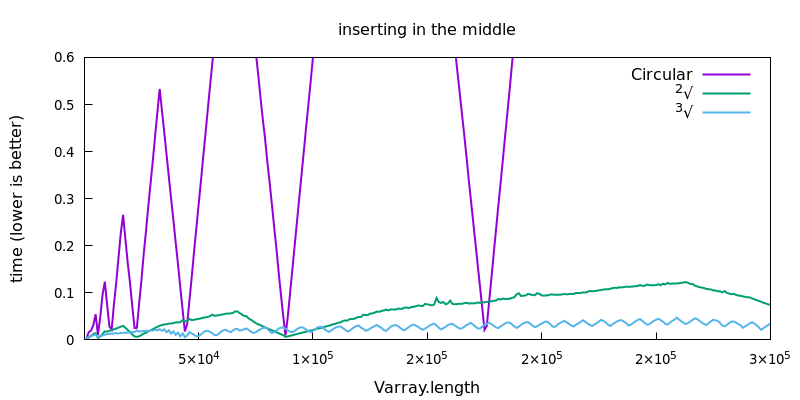Legend:
Page
Library
Module
Module type
Parameter
Class
Class type
Source
Page
Library
Module
Module type
Parameter
Class
Class type
Source
This library provides an implementation of variable sized arrays, which are also called resizable arrays, dynamic arrays or even "vectors" in C++ and "ArrayList" in Java. Just like an array, accessing any element by its index is constant time, but one can also efficiently insert and delete at any location (with the array resizing automatically to meet the need).
Following the above paper, the family of tiered vectors yields a nice compromise between random access and resizing:
Module Circular |
|
|
| Memory overhead |
|---|---|---|---|---|
Circular | O(1) | O(1) amortized | O(N) | O(N) |
Root(Circular) | O(1) | O(1) amortized | O(√N) | O(√N) |
Rootk-1(Circular) | O(k) | O(k) amortized | O(k2 × k√N) | O(Nk-1 / k) |
In other words, each instantiation of the Root functor leads to slower random access into the array, but it also makes insertion and deletion faster!

You can expect the following constant factors on random access:
Array | Circular | Root | Root2 | Root3 | Root4 | Root5 | |
|---|---|---|---|---|---|---|---|
get | 1x | 3x | 8x | 17x | 27x | 31x | 33x |
set | 1x | 2x | 4x | 8x | 12x | 14x | 15x |
The memory usage is competitive:
push_front, push_back and their respective pop, are amortized constant time, since they frequently need to allocate small chunks of O(k√N) up to O(k k√N) memory as the varray grows or shrinks.push_back are to be O(1).If you only care about fast random access and resizing at the right end with {push,pop}_back, then the pre-existing libraries provide smaller constant factors : (in alphabetical order) BatDynArray from Batteries, CCVector from Containers, RES as a standalone library or even vector as a single module.